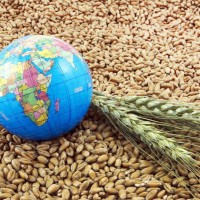News
17.02.2025
Ukrainian grain exports during a full-scale war: how alternative logistics routes worked

With the start of the full-scale war in Ukraine and the blockade of maritime export routes, the only option for Ukrainian farmers to supply the world with essential food and conduct international trade was through neighboring countries and via ports on the Danube.
Just a few months after the invasion began, the European Union launched the “Solidarity Lanes” – alternative export channels for Ukrainian goods, including agri-food products, transiting through neighboring EU member states. Initially, export volumes were limited, as the existing infrastructure was not designed to handle the large quantities that needed to be transported out of Ukraine. However, as processes were streamlined, export volumes gradually increased. Additionally, another alternative export route emerged through the Danube River ports, which expanded their export capacity from 1 million tons per year before the war to 1 million tons per month during the war. Nonetheless, these alternative routes could not fully meet the need for exports, leading to growing carryover stocks in Ukraine.
In May 2022, the FAO (UN) Food Price Index reached a record high, and global grain stocks were declining while the Ukrainian market was oversaturated, with a new harvest soon to be gathered. It became clear that Ukrainian products needed to be exported in larger volumes, particularly to regions that had previously depended on Ukrainian grain. By July 2022, the “Grain Corridor” was established in cooperation with the UN, Türkiye, and Russia – a maritime export route for Ukrainian agricultural products that remained operational until July 2023. In October 2023, thanks to the efforts of the Ukrainian Armed Forces, Ukraine opened its own maritime export route from the ports of Greater Odesa. This enabled the export of significant carryover stocks by the beginning of the 2024/25 marketing year.
The maximum export volume through the borders of neighboring countries was 3.7 million tons of grains, oilseeds, and their processed products in August 2023 – a period when the "Grain Corridor" had already ceased operation, and Ukraine’s independent maritime route had not yet started. The breakdown of exports by country was as follows: Romania – 73% of the total exported volume (thanks to the seaport of Constanța), Poland – 14%, Hungary – 9%, Moldova – 2%, and Slovakia – 2%.
As Ukraine’s independent maritime export route became operational, transit through neighboring countries declined. Over the last six months of 2024, the average monthly export volume through neighboring countries decreased by 3.7 times compared to the peak level, averaging 1.0 million tons of grains, oilseeds, and processed products. In December 2024, compared to the peak period, exports through the Romanian border fell 8.2 times to 0.3 million tons, the Polish border by 1.9 times to 0.3 million tons, the Hungarian border by 1.9 times to 0.2 million tons, the Moldovan border by 8.9 times to 0.01 million tons, and the Slovak border by 12.0 times to 0.01 million tons.






































































































































































